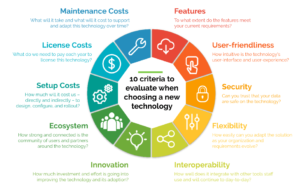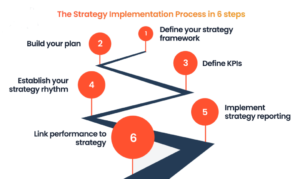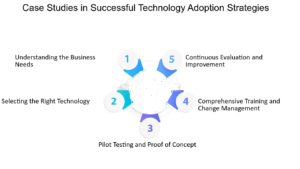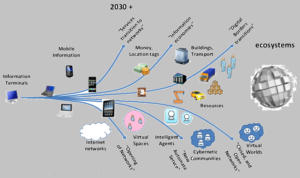Introduction:
In today’s rapidly evolving digital landscape, staying ahead of technological advancements is not just advantageous but essential. The integration of new technology can drive innovation, streamline processes, and enhance productivity. However, adopting new technology comes with its own set of challenges. This guide will walk you through the strategic approach to understanding, evaluating, and implementing new technology in a professional setting.
Understanding the Importance of New Technology:
Driving Innovation and Competitiveness:
New technology is the cornerstone of innovation. Companies that leverage cutting-edge tools and platforms can develop novel products, services, and business models. This innovation is critical for staying competitive in an increasingly crowded market.

Enhancing Efficiency and Productivity:
Technological advancements often lead to more efficient workflows. Automation, artificial intelligence (AI), and advanced data analytics can significantly reduce the time and effort required for routine tasks, allowing professionals to focus on more strategic activities.
Improving Decision-Making:
Technologies such as big data and machine learning can provide insights that were previously unattainable, leading to more informed and effective strategies.
Evaluating New Technology:
Identifying needs and goals
Before adopting new technology, it’s crucial to identify the specific needs and goals of your organization. Conduct a thorough assessment to understand where the gaps and inefficiencies lie. Ask yourself:

- What problems are we trying to solve?
- How will this technology support our business objectives?
- What are the potential benefits and risks?
Researching Options:
Once you’ve identified your needs, the next step is to research available technologies. This involves:
- Reading industry reports and white papers
- Attending webinars and conferences
- Consulting with experts and peers
- Reviewing case studies of similar organizations
Cost-Benefit Analysis:
Implementing new technology often requires a significant investment. Conduct a cost-benefit analysis to determine the potential return on investment (ROI). Consider both direct and indirect costs, such as:
- Purchase and implementation costs
- Training and support expenses
- Potential downtime during the transition
Weigh these costs against the expected benefits, such as increased efficiency, higher revenue, and improved customer satisfaction.
Scalability and Integration:
Ensure that the new technology can scale with your business and integrate seamlessly with your existing systems. Scalability is vital for growing organizations, while integration minimizes disruption and maximizes the utility of your current technology stack.
Implementation Strategy:
Planning and preparation:
Successful implementation starts with meticulous planning. Develop a detailed roadmap that outlines:

- Key milestones and timelines
- Resource allocation
- Roles and responsibilities
- Risk management strategies
Training and support:
Proper training is essential for a smooth transition. Provide comprehensive training sessions for your team to ensure they are comfortable and proficient with the new technology. Continuous support, whether through internal resources or external consultants, is also crucial for addressing any issues that arise post-implementation.
Pilot Testing:
Before a full-scale rollout, conduct a pilot test. Select a small, representative segment of your organization to test the new technology. This phase allows you to:
- Identify and resolve issues.
- Gather feedback from users.
- Adjust your implementation plan as needed.
Full-Scale Deployment:
After successful pilot testing, proceed with full-scale deployment. Communicate clearly with all stakeholders about the changes, benefits, and what to expect during the transition period. Monitor the process closely to ensure everything goes smoothly and address any emerging issues promptly.
Overcoming Challenges:
Resistance to Change:
One of the most common challenges to adopting new technology is resistance to change. To overcome this:
- Communicate the benefits clearly to all stakeholders.
- Involve employees in the decision-making process.
- Provide adequate training and support.
- Celebrate early wins to build momentum and buy-in.
Technical Difficulties:
Technical issues are inevitable when implementing new technology. To mitigate these:
- Choose a reputable vendor with strong customer support.
- Have a dedicated IT team or consultant on hand.
- Develop a robust troubleshooting and contingency plan.
Budget Constraints:
- Budget constraints can hinder technology adoption. Address this by:
- Prioritizing critical needs
- Exploring financing options such as leasing or phased implementation
- Demonstrating the long-term ROI to secure executive buy-in
Case Study: Successful Technology Adoption:
Company Overview:
XYZ Corp., a mid-sized manufacturing company, faced challenges with outdated systems that hindered its productivity and growth. The leadership team decided to adopt a new enterprise resource planning (ERP) system to streamline operations and improve efficiency.

Steps Taken:
Needs Assessment: XYZ Corp. conducted a thorough needs assessment and identified key pain points in their current system, such as inventory management and order processing.
Research and Selection: The team researched various ERP solutions, attended industry conferences, and consulted with experts before selecting a scalable, cloud-based ERP system.
Cost-Benefit Analysis: A detailed cost-benefit analysis showed a strong potential ROI, with anticipated benefits including reduced operational costs and improved customer satisfaction.
Implementation Plan: XYZ Corp. developed a comprehensive implementation plan that included a phased rollout, extensive employee training, and a robust support system.
Pilot Testing: The company conducted a successful pilot test with one of its smaller departments, gathering valuable feedback and making necessary adjustments.
Full Deployment: With the pilot’s success, XYZ Corp. rolled out the ERP system across the entire organization. Continuous monitoring and support ensured a smooth transition.
Results:
The new ERP system led to significant improvements:
Increased Efficiency: Automated processes reduced manual work and errors, leading to a 30% increase in operational efficiency.
Enhanced Visibility: Real-time data and analytics provided better visibility into inventory and sales, enabling more informed decision-making.
Cost Savings: The company realized a 20% reduction in operational costs within the first year.
Future Trends in Technology:
Artificial Intelligence and Machine Learning:
AI and machine learning are transforming industries by enabling smarter decision-making, predictive analytics, and automation. These technologies will continue to evolve, offering even more sophisticated tools for businesses.

Internet of Things (IoT):
IoT devices are revolutionizing how businesses operate, providing real-time data and insights. From smart manufacturing to connected logistics, the IoT is set to play a critical role in enhancing operational efficiency.
The rollout of 5G networks promises faster, more reliable internet connections, facilitating advancements in remote work, smart cities, and advanced industrial automation.
Conclusion:
Adopting new technology is a complex but rewarding endeavor. By understanding its importance, thoroughly evaluating options, and implementing it strategically, professionals can harness the power of technology to drive innovation, efficiency, and growth. Stay informed about emerging trends and continuously seek opportunities to leverage technology for competitive advantage. The future belongs to those who embrace and adapt to technological change.

